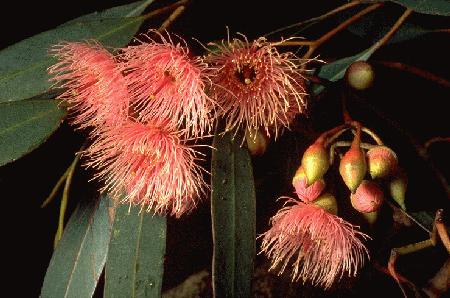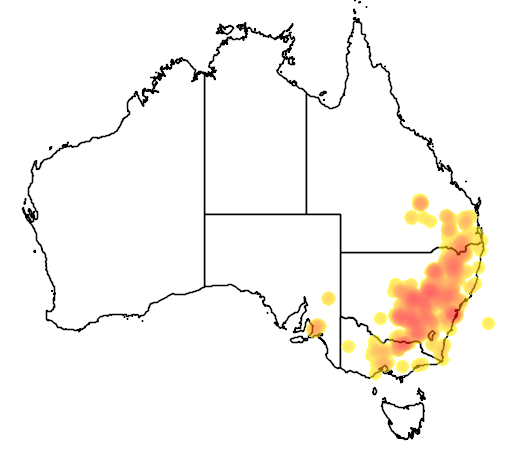Description
Common names
Mugga, Red Ironbark, Ironbark, Mugga Ironbark, Red-flowering Ironbark, Three Fruited Red Ironbark.
Scientific names
Eucalyptus sideroxylon.
Family
Myrtaceae.
Genus
Eucalyptus.
Name origin
Sideroxylon, from Greek sideros, iron, and xylon, wood, referring to the hard wood.
Rainfall
500mm.
Growth rate
Moderate.
Growth height
Up to 35m.
Presence in Australia
Confined to Gilmore Lower and Sandy subcatchments.
This specie has been identified in the following Australian states: Qld, NSW, ACT, Vic, SA.
Habitat
Sclerophyll woodland on lighter poorer soils.
Habit
Tree to 35m high with red-brown to brown-black "ironbark" and dull green or grey-green adult leaves.
Site preference
Poor, shallow soils including gravels, sands, ironstones and clays. Tolerates frost. Moderately drought tolerant.
Characteristics
Moderate growth rate.
Seed collection
Early Aug-late Feb. Monitor seed-bearing capsules as seed released 3-8 weeks after maturity.
Propagation
From seed (±226 viable seed per gram).
Regeneration
From seed, particularly in the absence of competitive exotic grasses or weeds, and during wet summers.
Shade and shelter
Useful medium to high-level cover in windbreaks.
Fuel
Excellent.
Timber
Dark red with moderately fine texture and interlocked grain. Very hard, strong, and extremely durable. Density about 1150 kg/m3. Used for heavy engineering construction, railway sleepers and in turnery. Gaining popularity as furniture timber and for electric fence posts and droppers. Posts last in the ground for over 100 years. Appears to retain rich-coloured timber when grown quickly. Potential for woodlot planting for farm timber, firewood and valuable specialty timber.
Wildlife
Excellent habitat. Honeyeaters, Swift Parrots, lorikeets, Squirrel Gliders and Sugar Gliders attracted to nectar, an important winter food source. Important food source for many native insect-eating birds and mammals. Hollows good nest sites for many birds and mammals.
Koori
Timber used for boomerangs.
Ornamental
Very attractive. Flowers prolifically. Beautiful dark bark and contrasting foliage. Apparently retains rich coloured features when grown quickly.
Other
Leaves and bark produce various-coloured dyes depending on mordants used. Leaves contain high quality medicinal oil, with at least 70% cineole content, used commercially. One of most reliable honey producing Australian trees.


